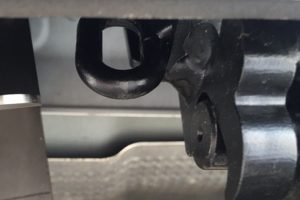Reversing made easy: 5 tips for maneuvering with the trailer
Maneuvering with a trailer, parking and normal driving is often not as easy as one would wish. For driving with a trailer, you do not only have to get used to the big yoke, but also always pay attention to the restrictions of the driver’s license.
Even with practice, maneuvering and reversing with the trailer is often the most difficult t ask. To make sure that this is no longer a hurdle, we have put together five tips that make reversing with a trailer easier and prepare you for the next shunting.
What you should look out for when maneuvering
- Before you start driving and, for example, place the trailer in a parking space, you should make sure to adjust your mirrors so that you can see the trailer well. You may not neglect the interior mirror, this is of course much less used than usual, but it can be a help when reversing, since you can watch the trailer well in there and you can make out landmarks on the trailer. Of course, you might alreday know this from attaching, once you have no helper, attaching through landmarks on the trailer becomes easier even without help.
- When going backwards, make sure you drive slowly and steer. The smaller the trailer, the more it reacts to your steering movements. So, if you slow things down a bit, you can avoid the trailer suddenly taking a position that you either could not predict or could not easily undo. If you are slow, you can brake at any time and react to movements of the trailer.
- If you are not sure about the distances when parking, you should get a referrer to help you. If you do not have anyone, get out in between and see how much maneuvering space you still have.
- Make sure the angle does not get too steep when reversing. Because the steeper the angle is, the more elaborate is the parking in the parking space for you. If possible, drive a bit farther away from the parking space, then relax in a gentle arc.
- When choosing the parking space, you should make sure in advance that this is not only big enough, but you also have enough space to maneuver. Consider the length of your team and act accordingly anticipatory.











 When the winter months are coming closer one has to prepare some of the tools used on a regular basis. Like the outdoor furniture the towbar must be prepared for the colder months as well. While a fixed towbar can not really be prepared, a detachable towbar should always be detached if not in use. Then, a cleaning is recommended as well as packing the towbar in the provided bag.
When the winter months are coming closer one has to prepare some of the tools used on a regular basis. Like the outdoor furniture the towbar must be prepared for the colder months as well. While a fixed towbar can not really be prepared, a detachable towbar should always be detached if not in use. Then, a cleaning is recommended as well as packing the towbar in the provided bag.